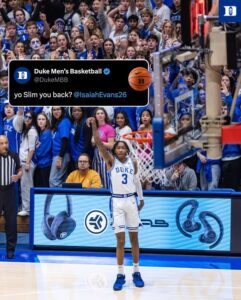
The NCAA (National Collegiate Athletic Association) governs collegiate sports in the United States, ensuring fairness, maintaining the integrity of college athletics, and upholding academic standards for student-athletes. However, its decisions can sometimes spark controversy and bring significant attention to the affected programs, particularly when high-profile athletes are involved. A significant example of this occurred when three standout players from the Ohio State University football team were officially dismissed by the NCAA due to violations of NCAA rules. This incident marked a dramatic moment in both Ohio State football history and NCAA governance.
Context of Ohio State Football and the NCAA
Ohio State University (OSU), located in Columbus, Ohio, is one of the most successful and storied programs in college football. With a rich history filled with national championships, conference titles, and a loyal fan base, the Buckeyes consistently compete at the highest levels of collegiate football. The program has produced numerous NFL players, Heisman Trophy winners, and future Hall of Famers.
The NCAA, on the other hand, is the governing body for college athletics and operates a strict set of rules designed to maintain the amateur status of student-athletes. These rules include eligibility requirements, recruitment regulations, financial aid restrictions, and codes of conduct that govern the behavior of student-athletes both on and off the field.
The balance between the pursuit of athletic excellence and the maintenance of fairness and integrity is not always easy, and it has led to several scandals and controversies over the years. The NCAA’s role in overseeing the behavior of players and punishing those who break the rules is often controversial, particularly when it involves high-profile athletes.
The Dismissal of Three Ohio State Players
The event in question revolves around the dismissal of three Ohio State football players, who were among the team’s most talented and promising athletes. Their names—highlighted as the center of a scandal—became synonymous with a series of NCAA violations that shook the Buckeyes’ program. These players were accused of breaching NCAA rules, specifically related to accepting improper benefits.
The Players Involved
- Terrelle Pryor (Quarterback): Terrelle Pryor was a highly recruited quarterback who joined Ohio State in 2008. As one of the top quarterbacks in the nation, he was viewed as the future of the Ohio State football program. His combination of athleticism, size, and arm strength made him a dual-threat quarterback, and he led Ohio State to a number of important victories.
In 2010, Pryor’s career took a significant turn when allegations of improper benefits came to light. Pryor was one of several Ohio State players who were found to have sold memorabilia, including jerseys, championship rings, and trophies, in exchange for cash and tattoos. This violation of NCAA rules led to an investigation that would eventually result in his suspension and eventual dismissal from the team.
- Jim Tressel (Head Coach): Jim Tressel, the head coach of Ohio State at the time, was also embroiled in the controversy surrounding the dismissal of these players. Tressel was known for his successful tenure as the head coach of Ohio State, leading the team to multiple Big Ten championships and a national title. However, it was revealed that Tressel had been aware of the players’ violations but failed to report them to the NCAA or take action to address the issue. This lack of transparency and compliance with NCAA rules led to his resignation as head coach in 2011.
- Other Players Involved: Besides Terrelle Pryor, several other key players were involved in the scandal. They included defensive lineman, wide receiver, and other standout athletes who were implicated in accepting improper benefits in exchange for memorabilia. These players were also subsequently suspended or dismissed from the team.
The NCAA’s Investigation and Ruling
The NCAA investigation into the Ohio State football program began after reports surfaced that several players had sold memorabilia to a local tattoo parlor owner in exchange for cash and tattoos. The investigation revealed that these players had violated NCAA rules, which prohibit student-athletes from receiving benefits based on their athletic performance or status.
The NCAA’s ruling on the matter was swift and severe. It concluded that the players involved had committed violations of NCAA rules, and they were subsequently suspended for several games. However, the story did not end there. Further investigation revealed that Jim Tressel, the head coach at the time, had been informed of the violations but failed to report them to the NCAA. This breach of NCAA policy led to Tressel’s resignation and added another layer of controversy to the scandal.
The players involved in the scandal were handed severe penalties. The most notable of these penalties was the dismissal of Terrelle Pryor from the Ohio State football program. Pryor, who was considered one of the top quarterbacks in the nation at the time, was barred from returning to the team and would go on to pursue a career in the NFL, albeit under a cloud of controversy.
The NCAA also handed down several other sanctions against Ohio State, including a reduction in scholarships, bowl game bans, and other recruiting limitations. These penalties were intended to deter similar violations in the future and to hold the program accountable for the actions of its athletes and coaching staff.
Impact on Ohio State Football
The NCAA’s ruling had a significant impact on Ohio State football, both in the short term and in the long term. In the immediate aftermath of the scandal, the Buckeyes lost some of their best players, including Pryor, who was viewed as the future of the program. The loss of such a talented quarterback, combined with the suspensions of several other key players, weakened the team for the upcoming seasons.
Jim Tressel’s resignation was another blow to the program, as he had been the face of Ohio State football for over a decade. Under Tressel’s leadership, the Buckeyes had been one of the most successful teams in college football, and his departure left a leadership void that took time to fill.
Despite the setback, Ohio State football eventually recovered. The program brought in Urban Meyer, one of the most successful coaches in college football history, to replace Tressel. Meyer led Ohio State to a national championship in 2014 and established a new era of success for the Buckeyes. However, the scars from the 2010 scandal were still visible in the program’s history, and the memory of the players’ dismissals and the penalties imposed by the NCAA lingered.
Larger Implications for College Football
The dismissal of these players from Ohio State had broader implications for college football as a whole. It served as a reminder of the strict and often unforgiving nature of NCAA regulations and the potential consequences of violating these rules. The scandal also highlighted the challenges that college football programs face in maintaining compliance with NCAA rules while also competing at the highest levels of the sport.
The case also raised questions about the relationship between college athletes, coaches, and the NCAA. Some critics argued that the NCAA’s rules were too strict and unfairly punished student-athletes who were often under immense pressure to perform at a high level. Others contended that the NCAA was simply enforcing necessary standards to maintain the integrity of college athletics and prevent corruption.
Regardless of one’s perspective on the issue, the Ohio State scandal illustrated the complexity of the relationship between college football and the NCAA. The incident prompted discussions about reforming NCAA regulations, the role of coaches in overseeing their players, and the balance between collegiate athletics and the pursuit of academic success.
The dismissal of three standout Ohio State players by the NCAA was a significant event in the history of college football. It exposed the challenges faced by the NCAA in enforcing its rules, the consequences of violating those rules, and the far-reaching impact such violations can have on a football program. While Ohio State eventually bounced back from the scandal, the fallout from the incident served as a cautionary tale for college athletics.
The scandal also highlighted the pressure placed on student-athletes, coaches, and programs to balance their athletic and academic responsibilities while adhering to NCAA regulations. As college football continues to evolve, the lessons learned from the Ohio State scandal will likely continue to influence discussions about the future of collegiate athletics, player rights, and NCAA governance.





